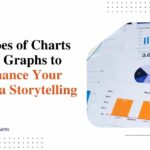5 Techniques to Read a Stacked Bar Chart: Unleash Detailed Analysis Power!
A stacked bar chart is a type of bar chart that allows you to break down and compare parts of a whole across different categories. Unlike regular bar charts that only show one data series per bar, stacked bar charts let you stack multiple data sets on top of each other in each bar to show the relationship of parts with the whole.
With a stacked bar chart, you gain rich analytical power to understand the composition of data and how different segments contribute to the aggregate total. Mastering techniques to read stacked bar charts unlocks this ability to derive detailed and nuanced analysis from the visualization.
In this article, we will cover the basics of stacked bar charts, the types of stacked bar charts, five key techniques for unleashing analytical insights, and common mistakes to avoid. Let’s get started!
An Overview of Stacked Bar Charts

Stacked bar charts are your analytical buddy if you want to break down data parts to see how they add up to form a total picture. Simply put, each bar represents a whole, like yearly revenue. Then, colored strips represent underlying pieces, like sales from different product lines or business divisions.
Comparing the segments horizontally lets you detect trends over time. Or spot patterns across categories like regions or customer types represented in bars. So stacked charts unlock deep composition analysis in an intuitive format vs just totals alone. Use them to split a big chunk into bite-sized pieces—so you can see the biggest chunks!
Components of a Stacked Bar Chart
Here are the key components that make up a stacked bar chart:
- Bars: Each bar in the stacked bar chart represents a whole category, such as a specific time frame (e.g., a year, a quarter), a region, a department, a product, and so on. The height of the full bar shows the total aggregate value for that entire category (e.g., the total sales for North America in 2022).
- Segments: Within each bar, you’ll see smaller colored strips stacked on top of each other. These colored segments represent the breakdown of the total value into its different component parts (for instance, electronics sales, furniture sales, etc., as constituent parts that make up the total sales).
- Axes: The vertical axis on the chart displays the measurement scale used, like Revenues shown in dollars. This allows you to quantify the height of the bars and the colored strips. The horizontal axis across the bottom of the chart labels each category represented by a bar (for example, 2022 Sales, 2023 Sales, Europe Sales, etc).
- Legend: The legend section, displayed off to the side of the chart, defines what each colored segment strip represents (for example, red colored strips represent electronics sales).
- Data Labels: The exact values for each segment and the totals are directly labeled on the bars for easy numerical reference.
- Title: The stacked bar chart title clearly defines the metric being visualized (for example, Annual Sales Breakdown by Product Category). This allows the reader to instantly understand key details.
- Gridlines: You may notice faint horizontal lines spreading across the background of the entire chart. These help gauge and compare the values of individual segments across the bars.
- Data Markers: Arrows or callout circles can occasionally be overlaid on the chart to draw attention to key data points and interesting insights worthy of highlighting.
- Baseline: A reference line at a set value can also be added, like marking industry average sales amounts, to compare the bar segments against. This sets a baseline benchmark for evaluation.
Types of Stacked Bar Charts
There are two primary types of stacked bar charts:
Vertical Stacked Bar Charts
This is the most common orientation with categories along the horizontal and values on the vertical axis. This works well for up to a few dozen categories.
100% Stacked Bar Charts
Here, the total height of each bar is adjusted to 100% to depict the proportional breakdown of segments. This lets you easily compare the composition across bars.
Techniques to Read a Stacked Bar Chart
Here are the key techniques to read a Stacked Bar Chart:
Technique 1: Break Down the Data Layers
A stacked bar chart’s core purpose is to break down a whole’s composition into its constituent parts. Pay attention to:
- The individual size of each segment within a bar
- How segments relate as a percentage of the total
- Which segments are the largest contributors
Comparing the layers across bars gives insight into how the composition changes.
Technique 2: Compare Across Categories
Position categories next to each other to directly compare how segments and totals differ. Useful comparisons:
- Time periods – Spot trends over time
- Departments – Find variances to dig into
- Demographics – Contrast groups
Technique 3: Focus on the Proportions
Use 100% stacked bar charts to spotlight the percent contribution of layers immediately.
Compare the percentage of each segment across categories. Which segments exhibit particularly large or small shares in different bars?
Technique 4: Look for Changes Over Time
Line up chronological categories to turn stacked bars into a time-series chart.
Observe how segments and category totals change across time periods:
- Growing or shrinking segments
- Change inflection points
- Segment relationships
This reveals trends hidden within the whole.
Technique 5: Contextualize with External Data
To aid analysis, add reference lines linked to target thresholds or benchmarks. Examples include:
- Revenue goal level
- Budget or forecast numbers
- Past period performance
- Industry averages
Comparing stacked bars against contextual data clarifies performance.
Common Mistakes to Avoid
Watch out for these common mistakes when analyzing stacked bar charts:
Misinterpreting Segments
It’s tempting when looking at a stacked bar chart to compare the vertical height of different segments across bars. But it’s incorrect to draw insights that way since the height just shows the segment value as a proportion of the total bar.
For example, the “electronics” segment may stretch halfway up one yearly sales bar, but less than a third up the next year’s bar. But that doesn’t necessarily mean electronics sales decreased. You have to check the numbers as the story might be that total revenues grew hugely year-over-year. So, rely on the actual data values, not eye-balling the chunk sizes.
Ignoring Small Segments
Also, avoid ignoring slim strips just because they seem visually small in the stacked bar compared to other fatter strips. It’s easy to overlook them as seemingly immaterial slivers. But again, you need to verify by reading the actual labeled values. Those “slivers” could still represent tens of millions in sales! So don’t let your eyes play tricks on you when assessing importance.
Overlooking Data Labels
This ties together those first two points. Whether it’s tempting to miscue off segment heights or the visual slimness of sections—check those data labels! Never assume what seems bigger or smaller from the visuals tells the full story without confirming the numbers. Don’t take visual proportions at face value when critical insights might hide in the hard figures attached right on the chart. Use all the data available!
Conclusion
With foundational knowledge and key techniques under your belt, you’re equipped to analyze stacked bar charts to derive penetrating insights. Break down composition layers, spotlight deviations between categories, focus on proportions, uncover trends over time, and add contextual benchmarks. Master these skills to unlock the rich analytical power within stacked bar chart visualizations for smarter data-driven decisions.







